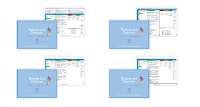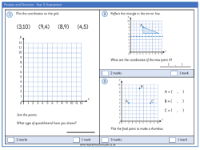Position and Direction - Vocabulary

Maths Resource Description
In the context of Year 5 mathematics, the term 'direction' refers to the course taken by a person or object when it moves. Understanding direction involves recognising orientations such as up, down, left, and right. For instance, 'left' indicates a direction, as does 'right'. These basic concepts are foundational for students to describe and interpret the relative position of objects or to navigate spaces. Position, on the other hand, denotes the specific location where something is situated. For example, one might describe the position of trees as being 'behind the bushes' or state that 'the rabbit is on top of the lamb'. These descriptions help in visualising spatial arrangements and relationships between different objects.
Further exploring spatial awareness, 'grid' is introduced as a tool consisting of equally spaced squares formed by two perpendicular lines known as axes, which are used to plot points. The 'x-axis' is the horizontal number line, while the 'y-axis' is the vertical one. 'Co-ordinates' are pairs of numbers that pinpoint an exact position on this grid, with the x-value plotted first, followed by the y-value. The 'first quadrant' is the upper right section of the grid where both x and y values are positive. 'Vertex' (or 'vertices' for plural) is the point where two lines or edges meet, often used to describe corners of 2D shapes. 'Translation' is the term used for moving a shape on a grid without rotating or resizing it, such as moving a rectangle 2 squares to the right and 3 squares down. 'Reflection' involves flipping a shape symmetrically across a 'horizontal mirror line' or 'vertical mirror line', which run parallel to the x-axis and y-axis, respectively. These concepts are integral to the curriculum and are assessed to ensure students' understanding of position and direction.


